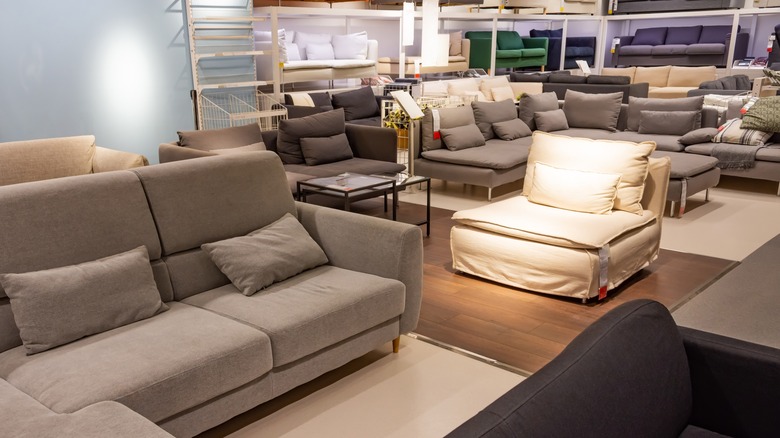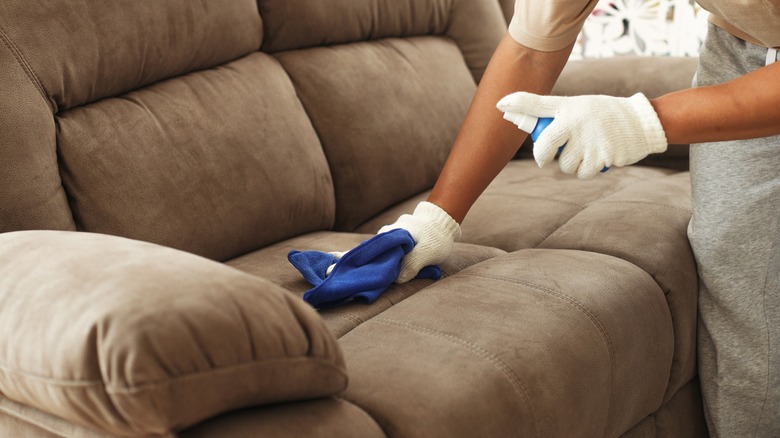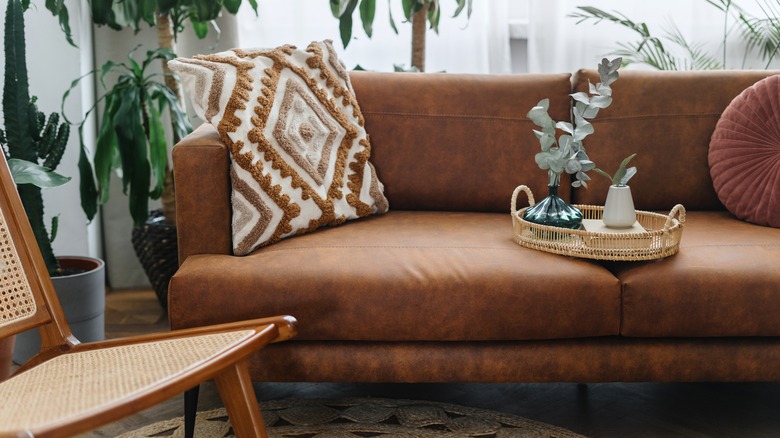This Fabric Will Almost Instantly Make Your Sofa Look Dirty
In the quest for the best upholstery for a sofa, many of us prioritize comfort, style, and durability. One popular choice that often appears to tick all these boxes is microfiber. Known for its soft texture and resilience, microfiber has become a go-to fabric for furniture. However, there's a catch that many homeowners discover too late: microfiber's tendency to make your sofa look dirty almost instantly. Let's delve into why this happens, how to mitigate it, and possible alternatives.
Microfiber is a synthetic petroleum-derived fabric, typically made from polyester or nylon. Its fibers are finer than a strand of silk, making it exceptionally soft to the touch. There are many different types of microfiber fabrics, such as microsuede, micromodal, and prolen. Microfiber fabrics have stain-resistant, color-fast, and absorbent qualities, making them well-suited for homeware, as well as cleaning and industrial purposes. As an upholstery material, microfiber has a reputation for being durable and comfortable. At first glance, it seems like an ideal choice for busy households and high-traffic living rooms.
Despite its many positive qualities, however, microfiber has a unique drawback. It tends to attract particles like a magnet and show every bit of dirt, dust, and lint. This is due to the static electricity that microfiber generates, which is actually what makes it work so well as a cleaning cloth. As a sofa material, though, not so much. If you have pets, this can be particularly troublesome. Additionally, the very thin fibers are easily disturbed, showing handprints, footprints, and even indentations from sitting.
Why microfiber shows every speck of dirt
While microfiber is somewhat resistant to spills, it's not immune. If something spills on the couch and it's cleaned up immediately, it's likely that it won't leave a stain. However, if not caught in time, the liquid will leave a visible, lasting spot. Something innocuous like water, or even wet clothing, perspiration, or skin oils can cause watermark discoloration on the fabric. It may not be as noticeable when wet, but once dry, the mark can be pretty obvious, especially on lighter-colored upholstery.
Cleaning microfiber isn't as straightforward as other fabrics. You often need specific cleaners and supplies, which vary depending on the type of microfiber sofa you have; make sure to check the furniture care tag for a lettered "clean code" before you begin. Some microfiber upholstery can only tolerate water-based cleaners ("W"), while others require solvent-based cleaners ("S"); some can do both ("S-W"), while others, neither ("X").
To successfully clean your microfiber couch, first vacuum it to remove any dust and debris. Depending on the type of microfiber upholstery, use the appropriate cleaning solution by spraying it on the fabric and gently blotting or rubbing the area. After cleaning, allow it to air dry, and then fluff it with a vacuum or upholstery brush. Test the cleaning solution beforehand on a small area to make sure it doesn't damage your couch, and avoid bleach or any other harsh chemicals. For specific stains or very delicate microfiber, consulting the manufacturer's cleaning instructions is recommended.
Alternatives to microfiber sofas
If these drawbacks and cleaning hassles are making you reconsider a microfiber couch, luckily, there are many alternatives. Leather or faux leather couches are valued for their durability and longevity, often outlasting sofas made from other materials. They offer easy maintenance, are spill and odor-resistant, and also have hypoallergenic properties – but at a higher price tag. Aesthetically, leather adds a timeless, elegant look to any space and develops a unique patina over time.
Velvet couches are known for their luxurious and plush texture, adding an element of sophistication to any room. They are soft to the touch, like microfiber, come in a wide variety of colors, and have a unique sheen that changes with the light and direction of the fabric nap. However, velvet requires careful maintenance to keep it looking its posh best, as it does attract dust and show wear over time. These couches are often recommended exclusively for formal living spaces or only as statement pieces.
Cotton blend couches offer a comfortable seating option, ideal for a cozy, casual living space. Their blend of natural and synthetic fibers ensures durability while providing a softer, more versatile, and breathable fabric choice. Although cotton blends are not as hardy as microfiber, they are much more environmentally friendly. If you do have a microfiber sofa, the key lies in regular maintenance and prompt cleaning, but for those looking for a lower-maintenance option, alternative fabrics might be a better choice.


